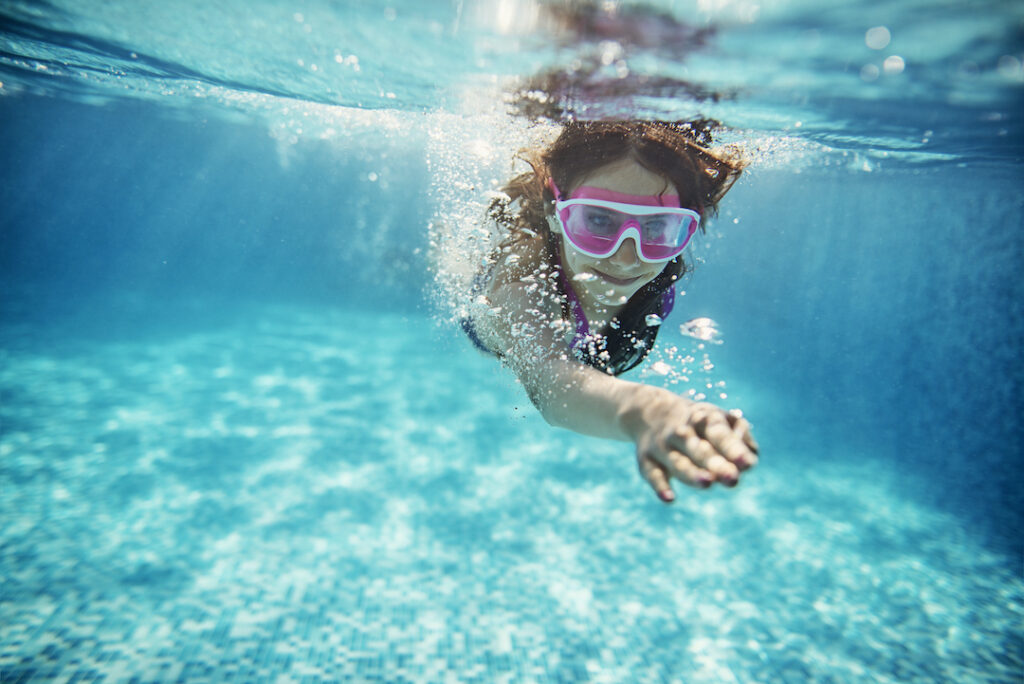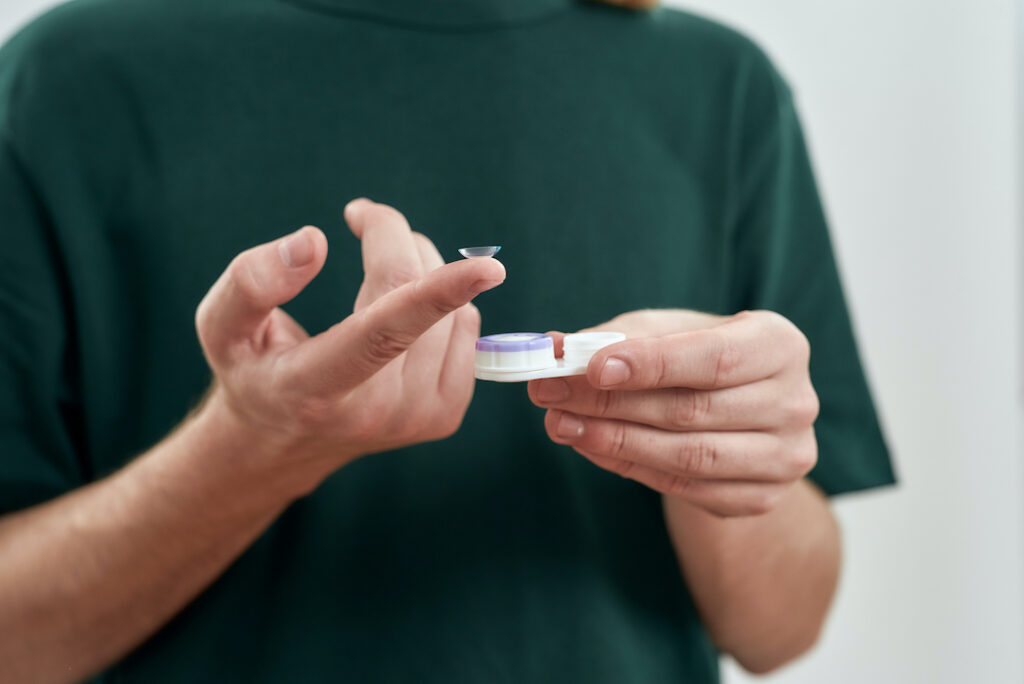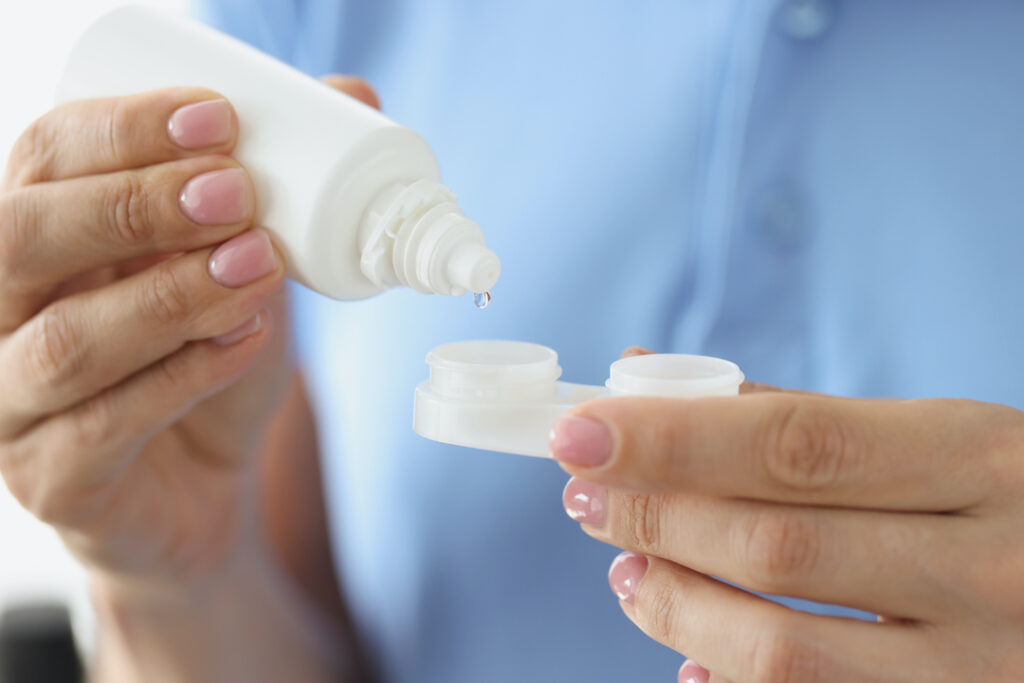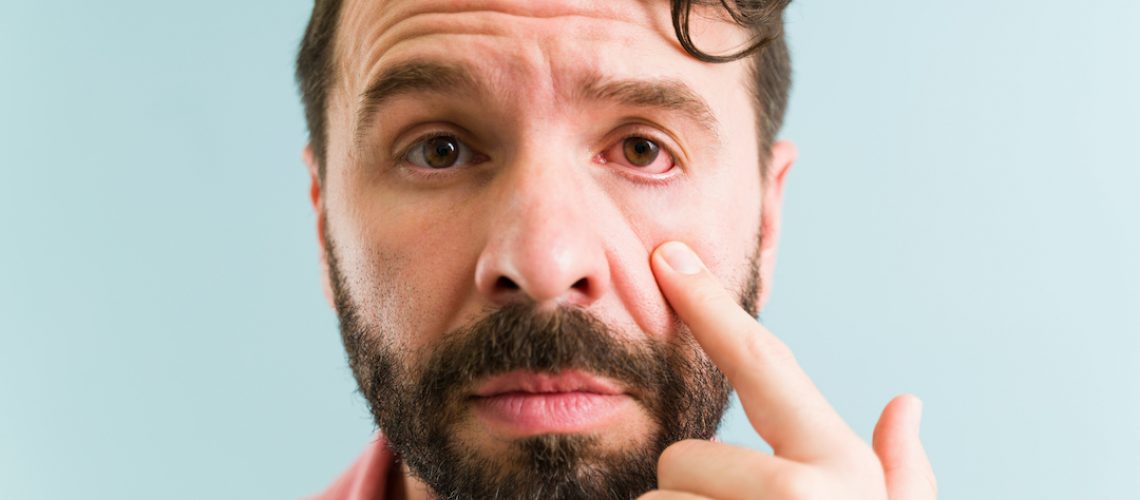Read this blog before you put your contact lenses in water overnight—there are risks you need to know
Table of Contents
Understanding the Interaction of Contact Lenses and Water
Storing contact lenses in water might seem like a quick fix, but it can actually be detrimental to your overall eye health

Swimming With Contacts
Risks Associated with Storing Contact Lenses in Water
Think twice before you go to store your contact lenses in water

Risk of Acanthamoeba Keratitis
A harmful germ called Acanthamoeba, often found lurking in these sources of water, can cause an eye infection known as Acanthamoeba keratitis. This severe eye infection has nightmarish consequences for contact lens wearers who take the risk.
This nasty infection latches onto contacts and gets transferred into your eyes. It’s uncomfortable and incredibly dangerous to your eye health. Some patients have required over a year of treatment to fight off this stubborn infection.
Long-term Effects on Eye Health
In extreme cases, Acanthamoeba keratitis leads to such severe damage that corneal transplants become necessary. And let me tell you—nobody wants their eyeballs under the knife if they can avoid it. In some instances, people have even lost their sight entirely due to improper storage practices with contact lens cases.
The Importance and Role of Contact Lens Solution
Now that we know you can’t put your contact lenses in water, let’s explore some of the benefits of using a proper contact lens solution
Maintaining Your Contacts Properly
- Always wash hands thoroughly before handling lenses—no exceptions
- Gently rinse your lenses in the solution before storing them
- Never top up or mix fresh solution with old—always use fresh drops
Proper Care and Hygiene for Contact Lenses
Let’s take a closer look at the proper way to handle contacts to keep your eyes healthy and comfortable

Taking good care of your contact lenses is a must if you want to keep your eyes healthy. Proper care and hygiene of contact lenses are essential to ensure optimal vision.
Handle with Clean Hands
The first step in lens hygiene is always handling them with clean hands. Wash thoroughly before touching your contacts to avoid introducing dirt or bacteria into the eye. Make sure to dry off completely, as residual water can interfere with the lens’ function.
Clean Your Lens Case Regularly
Your contact case can become a breeding ground for bacteria if not cleaned regularly and disinfected. Rinse it out daily and let air dry upside down on a clean towel.
A Fresh Pair Every Time for Daily Disposables
If you’re using daily disposable lenses, never wear them more than once. Each new day calls for a fresh pair of contacts to minimize the risk of infection and ensure optimal comfort and clarity.
Mindful Removal Practices
The Importance of Regular Eye Exams for Contact Lens Wearers
Eye exams are for more than checking for glaucoma
Although contact lens wearers may feel no discomfort and have a clear vision, regular eye doctor check-ups are essential to identify any potential issues early. But here’s the thing: not all eye problems cause symptoms right away. So, it’s crucial to get regular check-ups with an eye doctor.
These exams aren’t just about making sure your current prescription still works for you – they’re also about safeguarding your overall eye health.
Catching Problems Early On
Sometimes, issues like dry eyes or corneal abrasions can start out small but worsen over time if left untreated. These conditions might be linked to wearing contacts, leading to more severe cornea or damage, such as corneal ulcers.
A routine exam lets doctors spot these signs early on before they become big problems. Plus, by monitoring changes in your eyes over time, they can adjust treatment plans as needed.
Maintaining Your Prescription
Your glasses prescription isn’t always the same as your contact lens one—there are additional measurements involved when fitting lenses directly onto the eyeball itself. This makes annual reviews vital for maintaining accurate prescriptions and comfortable wear.
If anything feels off—even slightly—don’t wait until next year’s appointment. Reach out to a trusted practice immediately.
Daily Disposable Contacts
You might be thinking, “I use daily disposable lenses, so I’m safe from infections.” Unfortunately, that’s not entirely true. Although daily disposables do reduce certain risks because each pair is sterile straight from the packet (no chance of bacteria growing in the old solution), this doesn’t make you immune to all eye problems.
Issues like allergies, dry eye syndrome, or even a poorly fitting lens can still cause trouble. So, regular check-ups remain crucial whether your lenses are for daily wear or extended use.
Want to keep enjoying the ease of contact lenses and still maintain clear vision with healthy eyes over time? Remember not to miss your eye exams. They’re just as crucial as daily lens cleaning and timely replacements. Remember, your eyes are counting on you.
FAQs in Relation to Contact Lenses in Water
What can I use if I have no contact solution?
If you’re out of lens solution, try to get some as soon as possible. In a pinch, use saline or rewetting drops. Never resort to water.
What happens if you put contact lenses in water?
Contact lenses and water don’t mix well. Water can change their shape and let harmful bacteria stick around, which could lead to eye infections.
Can I put my contacts in the water for one night?
Storing your contacts in water, even overnight, is risky because it exposes them to dangerous and harmful germs that may harm your eyes.
Can I store contact lenses without a solution?
Avoid doing this whenever possible. If there’s no option but to leave the lenses dry, replace them with a fresh pair of stored contacts before wearing them again.
Let’s face it: we’ve all been tempted to keep our contact lenses in water. But now you know better. Contact lenses and water don’t mix well. Your best defense? Use proper contact solution for storage and cleaning, not just any liquid that’s handy. If swimming or showering with contacts is unavoidable, be mindful of the risks involved, such as chlorine exposure. Always practice good hygiene when handling your lenses. Last but not least—don’t forget those regular check-ups with your eye doctor!

